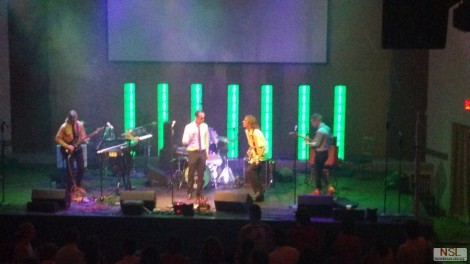
Fresh off the 72-hour madness of the Red Bull Creation contest some of the folks a North Street Labs took on a stage lighting project. It’s for a local performing venue that just opened up, and despite the time crunch the team pulled off another great build.
Sixteen meters of LED strip make the electronics for the project a whole lot easier. The strips run up the center of a cabinets built as stand-alone columns which will end up at the back of the stage. Each cabinet has its own 5V 4A power supply (note the burnout issues they mention when using cheap eBay PSUs). Each column has its own Arduino Uno driving the LEDs, with an RS485 shield to connect back to a main Arduino Mega 2560 controller. It uses a PSX controller to switch between different lighting modes.
The seven towers boasting 688 LEDs isn’t all that’s shedding light on the show. There’s also about 300 feet of EL wire at work.














reaaally needs more DMX.
+1
DMX goes a long way in an entertainment venue, and this is most of the way there since it’s already running RS-485.
Otherwise, pretty cool.
Onstage-in-your-face lighting is so MTV. It detracts from the band and makes for headaches more than too loud sound. And bad video of the band if you try. That aside the thing that such lighting needs is a colour organ or a way of controling with Human expression, gestural, pressure pots, not a lazy set of sequences with a beat trigger. Unless coupled to a beat machine and sequencer the lights should be played live just like the music. There is a place for scene lighting setups, for scenes not verbal-musical dynamics.
The towers were diffused specifically to avoid the “in your face lighting” effect that we have previously built (for dance shows that enjoy that sort of thing). Unfortunately, were focused on slowly introducing effects throughout the night more than filming it. The first band got simple color schemes, second band got a few random effects when they went crazy. The third got the majority of effects, and we triggered the lightning EL towers at good moments in the show. We specifically avoided using our built in sound sensor this time to get the exact effects we (and the venue) wanted. I personally loved the lightning arrays way more than the LED boxes, though they were technically less difficult.